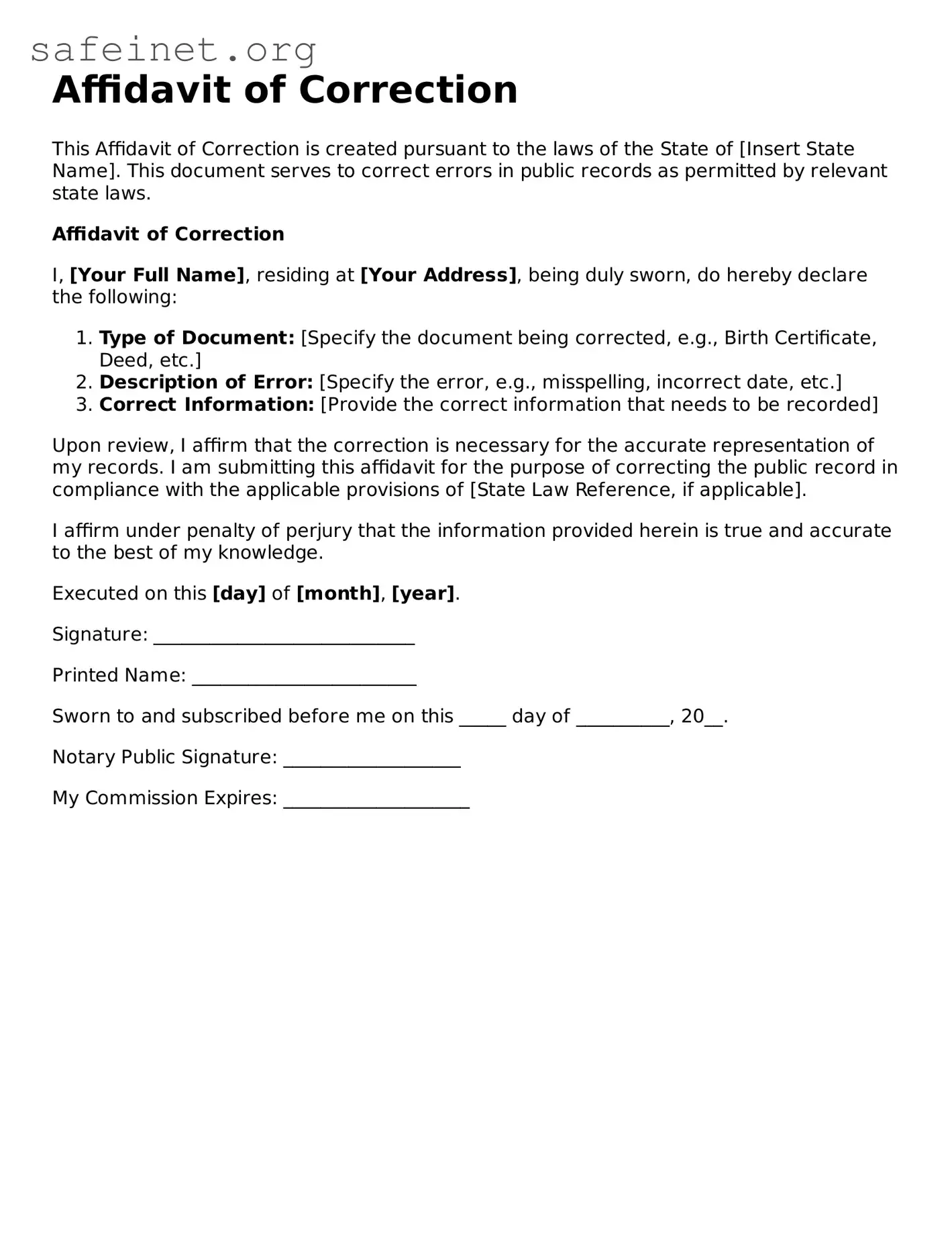Affidavit of Correction
This Affidavit of Correction is created pursuant to the laws of the State of [Insert State Name]. This document serves to correct errors in public records as permitted by relevant state laws.
Affidavit of Correction
I, [Your Full Name], residing at [Your Address], being duly sworn, do hereby declare the following:
-
Type of Document: [Specify the document being corrected, e.g., Birth Certificate, Deed, etc.]
-
Description of Error: [Specify the error, e.g., misspelling, incorrect date, etc.]
-
Correct Information: [Provide the correct information that needs to be recorded]
Upon review, I affirm that the correction is necessary for the accurate representation of my records. I am submitting this affidavit for the purpose of correcting the public record in compliance with the applicable provisions of [State Law Reference, if applicable].
I affirm under penalty of perjury that the information provided herein is true and accurate to the best of my knowledge.
Executed on this [day] of [month], [year].
Signature: ____________________________
Printed Name: ________________________
Sworn to and subscribed before me on this _____ day of __________, 20__.
Notary Public Signature: ___________________
My Commission Expires: ____________________
